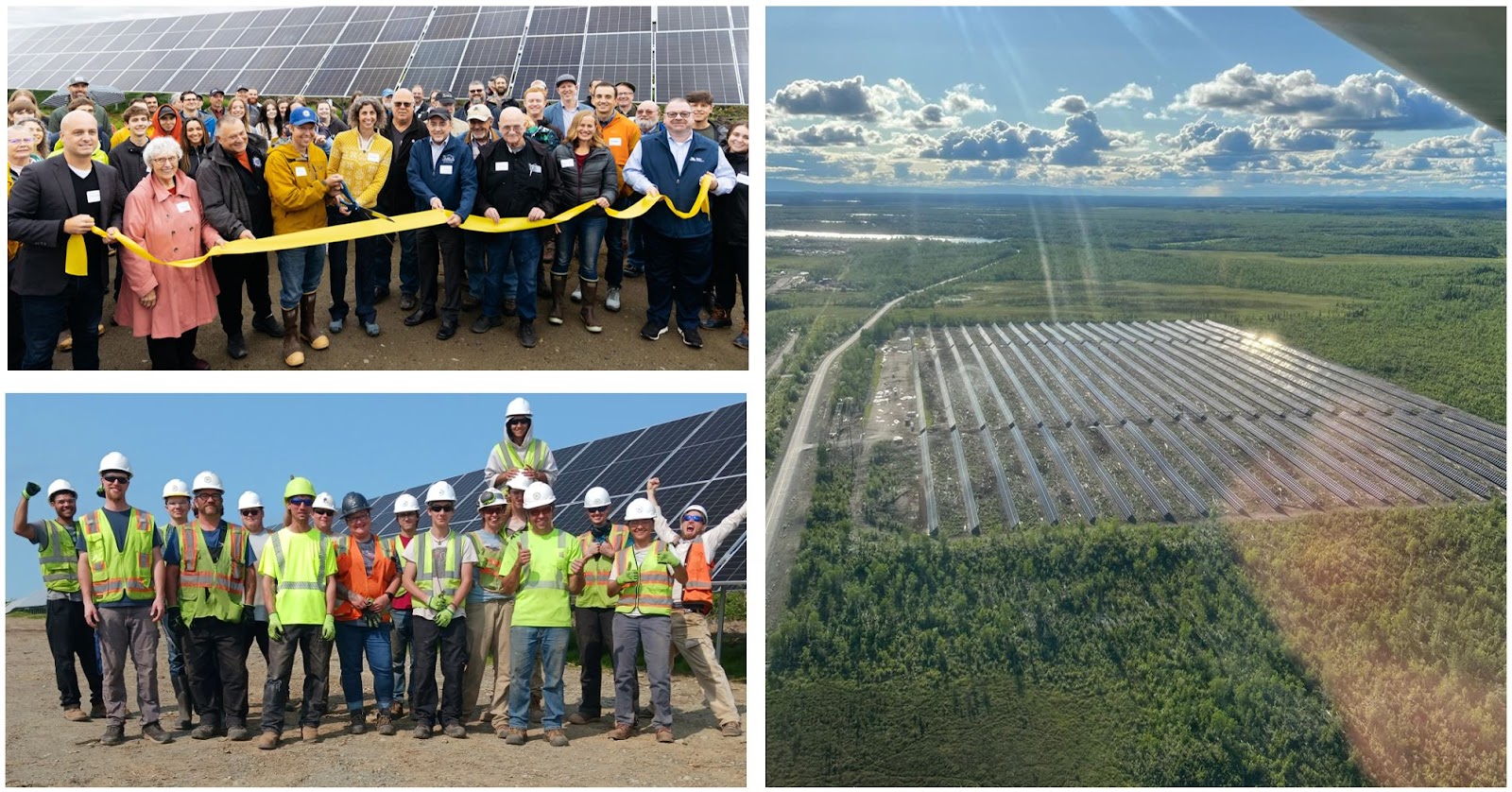The budget reconciliation process enables Congress to quickly consider and advance fiscal legislation, with topics spanning the country’s revenues, spending, federal debt limit, as well as a budgetary surplus or deficit. Throughout this process, the clean energy tax credits, which have created jobs, spurred local investment, bolstered the grid’s reliability, and contributed to lower electricity prices for Americans, were front and center in the committee meetings, where legislators placed them on the metaphorical chopping block.
In the early hours of the morning on Wednesday, May 21, the U.S. House narrowly passed the reconciliation bill with a 215-214 vote, where unfortunately, the House has taken a sledgehammer to these vital energy incentives. Citizens for Responsible Energy Solutions (CRES) President Heather Reams reacted in a statement, “While we are disappointed that energy tax credits were repealed and substantially cut in the package passed by the House, we are grateful for the champions who have fought to protect critical provisions that incentivize investment and economic growth. As the bill progresses to the Senate, we hope changes will be made to address and protect these important tax credits, which are working to secure American energy dominance. Without these provisions, the United States is at risk of falling behind adversarial nations in the global energy race—not to mention, American jobs and local economies will suffer a tremendous loss.”
Under the House version, clean energy projects would need to start construction within 60 days of the bill’s passage, have completely China-free supply chains by January 1, and start operating by 2029 to benefit from the Section 45Y production credit or the Section 48E investment credit, both of which would start being phased out in 2029, thereby creating a nearly impossible-to-meet timeline. Other tax credits, such as those used to bolster residential energy efficiency or purchase clean vehicles, would be eliminated outright after this year. If passed by the Senate and signed by the President, the legislation threatens to unwind an incredible amount of investment and energy development across the country, particularly in Alaska.
Domestic investment is at risk and must be protected to help create a stronger national economy with direct benefits for local communities. A report commissioned by the American Clean Power Association (ACP) and conducted by ICF at the end of 2024 found that between 2025 and 2035, there would be $3.8 trillion in net spending across the American economy due to the tax credits, with a more than fourfold return on taxpayer investment. The energy incentives would ultimately grow the American economy by contributing $1.9 trillion to the national GDP. In Alaska alone, they would lead to $2 billion in spending and grow the state’s economy by $1 billion.
Since 2022, these tax credits have already spurred $321 billion in investment across the country in clean energy projects and the construction of new industrial and manufacturing facilities, 2,369 of which have since opened their doors for business. The Clean Investment Monitor’s May 2025 report adds that $522 billion in investment remains to be spent on construction and installation at such factories, with 2,217 more plants yet to be built that will support even more American jobs.
Unfortunately, Energy Innovation’s May 2025 report estimated that the House reconciliation bill will undercut many of these 7,000 existing and planned projects. The uncertainty regarding federal support for clean energy between January and March of this year has already cost $6.9 billion due to project cancellations, and a significant portion of the planned $522 billion in investment may never come to fruition. The organization calculates that eliminating these incentives will cause the cumulative national GDP to decrease by almost $1.1 trillion. The report also says the bill will cost the country more than 830,000 jobs in 2030 and nearly 720,000 jobs in 2035.

Photo Courtesy Renewable IPP
On the other hand, the country would experience a renaissance in energy and manufacturing jobs if the clean energy tax credits are maintained. ACP and ICF report that over the next decade, these incentives would create 13.7 million jobs in total, or about 1.2 million jobs per year on average, ranging from over 600,000 in 2025 to nearly 1.5 million in 2032. Approximately 900 total jobs per year would be created in Alaska alone.
According to data from the Clean Economy Tracker, the primary clean energy manufacturing company setting up shop in Alaska is Graphite One. In July 2023, the U.S. Department of Defense announced that it had entered into a $37.5 million agreement to provide the company with a Technology Investment Agreement grant. In total, the company will invest $75 million to build a complete domestic supply chain of graphite materials to produce large-capacity batteries used in electric vehicles, vehicles powered by hydrogen fuel cells, and energy storage. Already, Graphite One is mining at its Graphite Creek Project, located on the Seward Peninsula, which is the “largest known flake graphite resource in the U.S.A. and is among the largest in the world.”
Senator Lisa Murkowski (R-AK) has visited the Graphite One site and spoke on the Senate floor last year about the importance of the project importance. She held up a piece of graphite from the site, noting “This graphite from Alaska would probably be the first piece of American graphite – of domestic graphite – that you’ve ever held in your life because there’s nothing domestic about the graphite that goes into our cell phones today. . . It’s not too late to realize the immense value that Graphite One holds for our economy and our security. This project will give us a significant domestic supply.”
Construction and operations roles at energy generation facilities are also threatened, as is the property tax revenue they would contribute to local communities. Alaska’s railbelt alone could lose up to $450 million from the loss of the energy tax credits. One of the losses is from Renewable Independent Power Producers’ Puppy Dog Lake project on the Kenai Peninsula, which would have been Alaska’s largest solar project and received over $20 million in tax credits to provide lower energy costs to 9,000 residences, while creating 40 to 60 construction jobs. However, the project was halted due to uncertainty surrounding the tax credits and may never resume.
Additionally, negative impacts are expected on the Dixon Diversion, projected to be the largest hydropower development in the state, providing power to an additional 30,000 homes, in addition to the current 54,000 homes served by the Bradley Lake Hydroelectric Project. It is said “to create significant job benefits in construction and operations over its lifespan.”
Two wind projects facing uncertainty are Alaska Renewables’ Shovel Creek Wind, located outside Fairbanks, and Little Mount Susitna Wind, situated northwest of Anchorage, across Cook Inlet. Together, these projects would be able to reduce demand for natural gas by 12% along the railbelt and would have contributed to the “all of the above” approach to domestic energy, ultimately lowering costs for Alaskan households.

Photo Courtesy Alaska Renewables
ACP and ICF note that investments resulting from the clean energy tax credits would add $846 billion to disposable household income in the next decade, or nearly $77 billion per year, providing $400 million in total additional income for Alaskans; However, if they are stripped away, Alaskans and Americans will feel more economic pain. Rhodium Group estimates that American energy costs could increase by as much as 7% by 2035, resulting in an additional $290 per year, which will translate into cumulative annual energy costs exceeding $16 billion in 2030 and more than $33 billion by 2035.
The increase would be due to the loss of new generation capacity, with 57% to 72% less new clean capacity expected to be installed on the grid over the coming decade, and higher costs for fossil fuels. This comes when the country’s electricity demand forecast is set to increase from 2.8% to 15.8% by 2029, mainly driven by the demands of data centers and domestic industrial facilities. Without support for renewables, we cannot meet Americans’ energy demand or maintain our energy independence and dominance. The House reconciliation bill would cut out the clean energy sector at a time when Americans’ electricity needs are higher than ever and when the country needs every tool in its energy tool belt.

Photo Courtesy Lucid Motors
Moreover, polls indicate that most Alaskans are in favor of clean energy and tax incentives. Peak Insights found that 66% of Alaskan voters support the federal government accelerating the development and use of clean energy, while 64% support 2022’s tax credits, rebates, and other incentives to encourage investment, manufacturing, and using more clean energy. 81% said they support incentives specifically for manufacturers to produce clean energy technologies domestically rather than abroad.
As the polling shows, there is widespread support for preserving the tax credits in the state. In a letter to the editor published in the Anchorage Daily News, Duff Mitchell, managing director of Juneau Hydropower, Inc., and vice chairman of the Alaska Energy Authority board of directors, wrote, “In our state, energy policy isn’t theoretical. It‘s pragmatic and practical. It‘s the difference between affordable power and energy poverty. It‘s the difference between opportunity and prosperity or stagnation… Repealing or significantly altering these incentives would create uncertainty for ongoing efforts and could jeopardize critical funding streams that organizations like the Alaska Energy Authority, local utilities, and energy developers depend on. Without these resources, progress on affordable, long-term energy solutions for Alaska’s communities is at risk.” Both legislative chambers must pass identical bills deciding the fate of the energy credits before the package can be sent to the President’s desk.
During April’s Alaska Infrastructure Development Symposium, Sen. Murkowski told attendees that she spent more than an hour on a phone call with Interior Secretary Doug Burgum advocating for clean energy projects in the state: “So I said, ‘Please, please don’t forget the opportunities that come to our more rural communities that are more isolated who need to be able to access those resources that are there. And those resources may be a little bit of wind, it may be a little bit of solar, it may be a little bit of the of the run of river, it may be a little bit of geothermal.’” She believes in an Alaskan economy powered by renewables. In this year’s annual address to the Alaska State Legislature, she said, “We can put Alaska back on the global map for energy and resource production.”
In April, she joined other legislators in a letter to Sen. John Thune (R-SD), the majority leader, advocating for the clean energy tax credits. As discussed in the letter, an all-of-the-above energy approach is vital to American prosperity and national security, and it aligns with both conservative values and the goals of the Trump administration.
The senators explained their hesitance to rip the rug out from the American businesses that have already relied on the tax credits to make substantial investments in expanding their domestic energy production or manufacturing presence: “A wholesale repeal, or the termination of certain individual credits, would create uncertainty, jeopardizing capital allocation, long-term project planning, and job creation in the energy sector and across our broader economy.” The senators also highlighted their unwillingness to place added hardship on American families: “Given rising energy demand, it is imperative that any modifications to the tax code avoid worsening the economic pressures that American households and businesses already face. For energy credits that provide a direct passthrough benefit to ratepayers, repeals would translate into immediate utility bill increases, placing additional strain on hardworking Americans.”
Alaskans have recognized Sen. Murkowski’s efforts to support the clean energy investments. In a letter to the editor published in the Fairbanks Daily News-Miner, Charrisse Millet, Executive Director of the Public Safety Employees Association, wrote, “I’m glad Sen. Lisa Murkowski is part of a growing group of Republicans calling on President Trump to maintain the clean energy tax credits passed as part of the Inflation Reduction Act. While the IRA has its flaws, a full repeal of the law would be devastating for Alaska’s energy independence — and dominance.” In an op-ed published in Homer News, Laura Bonner, executive board member of IBEW Local 1547, added, “Sen. Murkowski is correct in her public statements that renewable energy tax credits are key for developers to invest in large-scale projects such as data centers, electrical grid modernization, and others… Now that legislation is headed to the U.S. Senate, there is an opportunity for Sen. Murkowski to help fix it for Alaska.”





